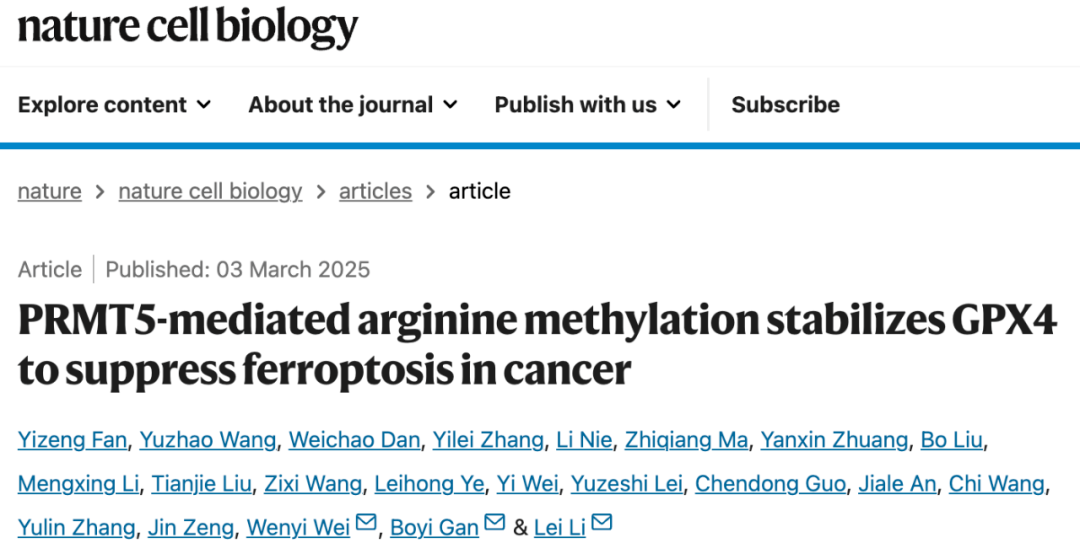Recently, Professor Li Lei from the First Affiliated Hospital (FAH) of Xi'an Jiaotong University (XJTU) joined hands with Professor Gan Boyi from the University of Texas MD Anderson Cancer Center and Professor Wei Wenyi from Harvard Medical School to publish an article entitled “PRMT5-mediated arginine methylation stabilizes GPX4 to suppress ferroptosis in cancer” in Nature Cell Biology, one of the prestigious Nature portfolio journals.
This study found that PRMT5-mediated arginine methylation enhances the stability of GPX4, thus suppressing ferroptosis in cancer and combining PRMT5 inhibitor treatment with ferroptotic therapies markedly suppresses tumor progression in vivo.

Studies have shown that ferroptosis is associated with multiple diseases including cancer. Therefore, researchers attempt to develop ferroptosis activators for cancer treatment. However, how tumors inhibit internal ferroptosis and promote the incidence of tumor remains elusive.
Ferroptosis is constantly accompanied by dysfunction of glutathione peroxidase 4 (GPX4). In this latest research, the teams report that methionine is metabolized into S-adenosylmethionine, which functions as a methyl-group donor to trigger symmetric dimethylation of glutathione peroxidase 4 (GPX4) at the conserved arginine 152 (R152) residue. This methylation prevents Cullin1-FBW7 E3 ligase binding to GPX4, thereby abrogating the ubiquitination-mediated GPX4 degradation and prolonging GPX4 half-life.
PRMT5 is a methyltransferase that catalyzes GPX4 methylation, decreases GPX4 protein levels by impeding GPX4 methylation and increasing ferroptosis inducer sensitivity in vitro and in vivo.
Notably, combining PRMT5 inhibitor treatment with ferroptotic therapies markedly suppresses tumor progression in mouse tumor models. In addition, the levels of GPX4 are negatively correlated with the levels of FBW7 and a poor prognosis in patients with human carcinoma.
In summary, the authors found that PRMT5 functions as a target for improving cancer therapy efficacy, by acting to reduce the counteraction of ferroptosis by tumor cells by means of PRMT5-enhanced GPX4 stability.